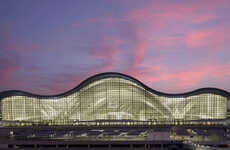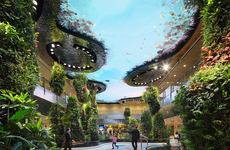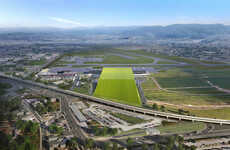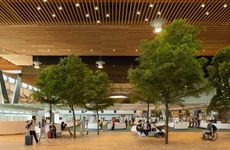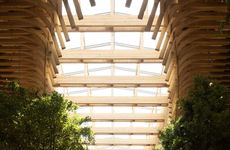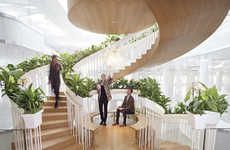
This Mumbai Airport is Inspired by Peacock Feathers & Indian Designs
Tiffany — February 27, 2014 — Art & Design
References: dezeen
American architecture and design firm SOM has constructed, designed and completed a 40 hectare terminal at the Chhatrapati Shivaji International Airport in India. The structure will hold approximately 40 million passengers a year and will accommodate the region's exponential growth.
The airport terminal was designed with Mumbai's motifs and style in mind. Gathering inspiration from traditional Indian architecture and the fan-like arrangement of a peacock's tail feathers, SOM decided to allude to traditional Indian air pavilions.
The exterior is an expansive span of a cell-like canopy made from concrete that underwent treatment. Inside, the check-in hall is located on the top level of the four-storey complex. Underneath the cell-like canopy are 30 columns that are perforated with colored glazing to allow natural light to enter the space.
The airport terminal was designed with Mumbai's motifs and style in mind. Gathering inspiration from traditional Indian architecture and the fan-like arrangement of a peacock's tail feathers, SOM decided to allude to traditional Indian air pavilions.
The exterior is an expansive span of a cell-like canopy made from concrete that underwent treatment. Inside, the check-in hall is located on the top level of the four-storey complex. Underneath the cell-like canopy are 30 columns that are perforated with colored glazing to allow natural light to enter the space.
Trend Themes
1. Indian-inspired Airport Design - The incorporation of traditional Indian architecture and motifs in airport design can create a unique and culturally-relevant experience for travelers.
2. Perforated Architecture - Incorporating perforated materials in building construction can allow for creative play with natural light and shade, while reducing energy consumption for lighting and cooling.
3. Cellular Design - Designing airports with a cellular structure offers a versatile and adaptable framework which can accommodate changing passenger needs and upgrades.
Industry Implications
1. Architecture - Architecture firms can expand their offerings by integrating inspirational and culturally-relevant design elements into public structures like airports.
2. Airport Technology - Airport technology companies can develop and integrate innovative solutions to create efficient and effective perforated structures, and cellular layouts.
3. Travel & Tourism Industry - Incorporation of unique cultural design elements can contribute to creating immersive and authentic travel experiences for tourists, showcasing local heritage and customs.
3.7
Score
Popularity
Activity
Freshness


